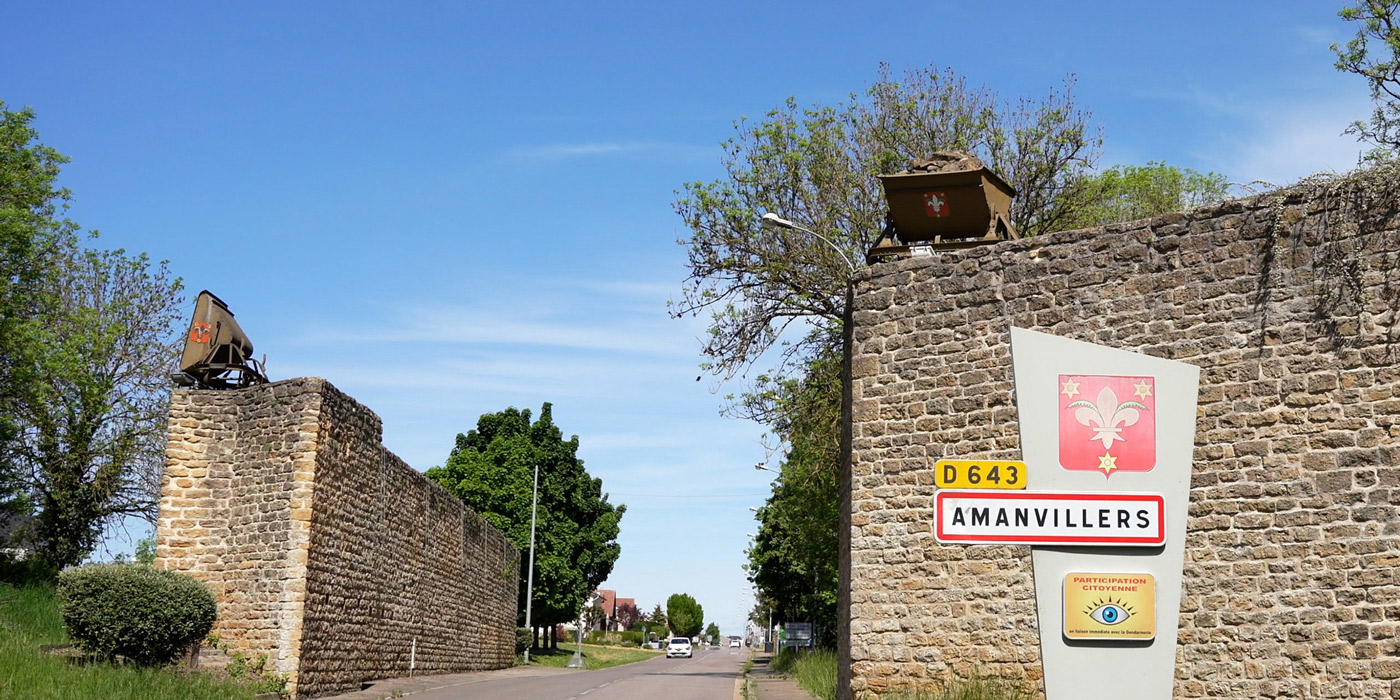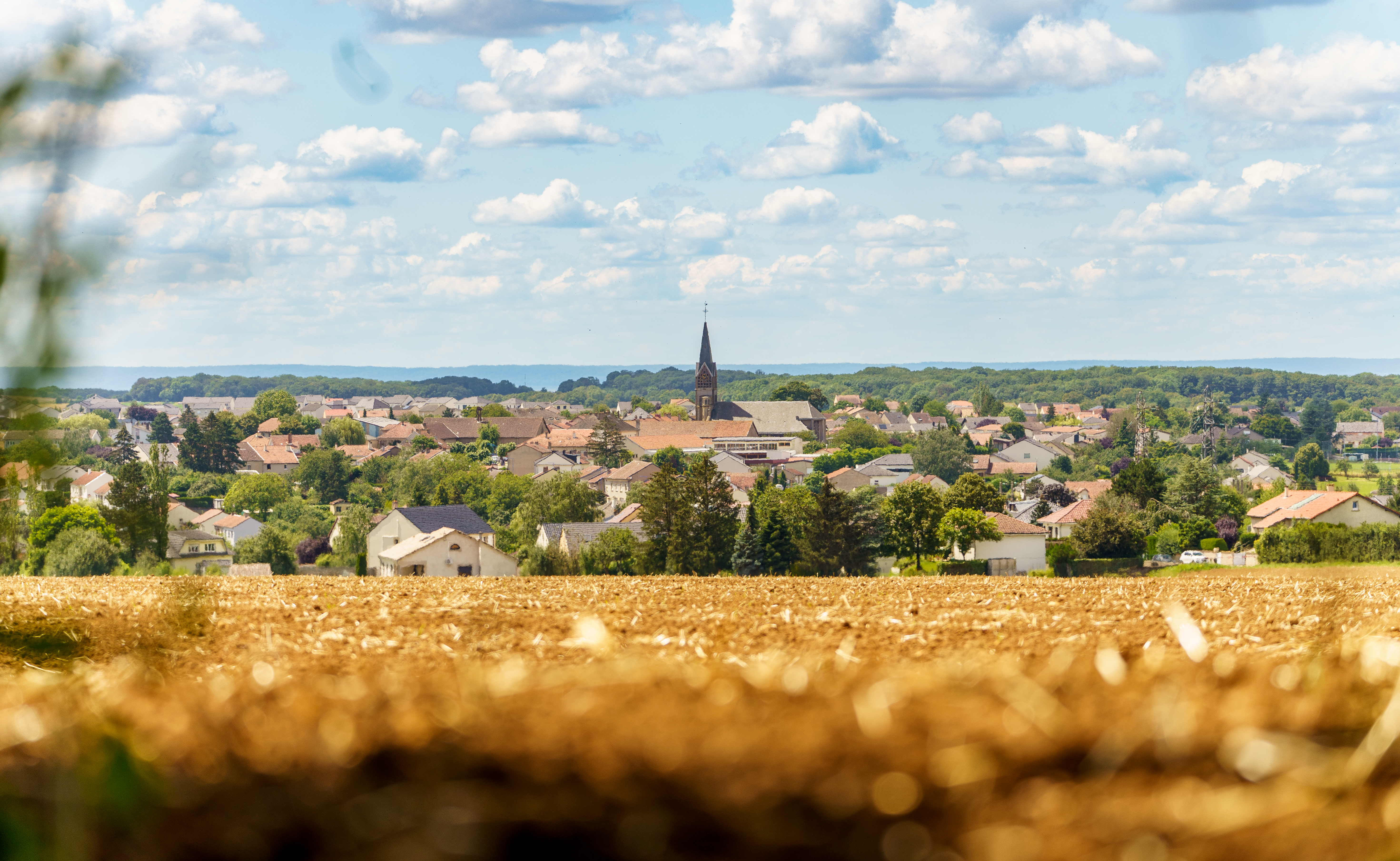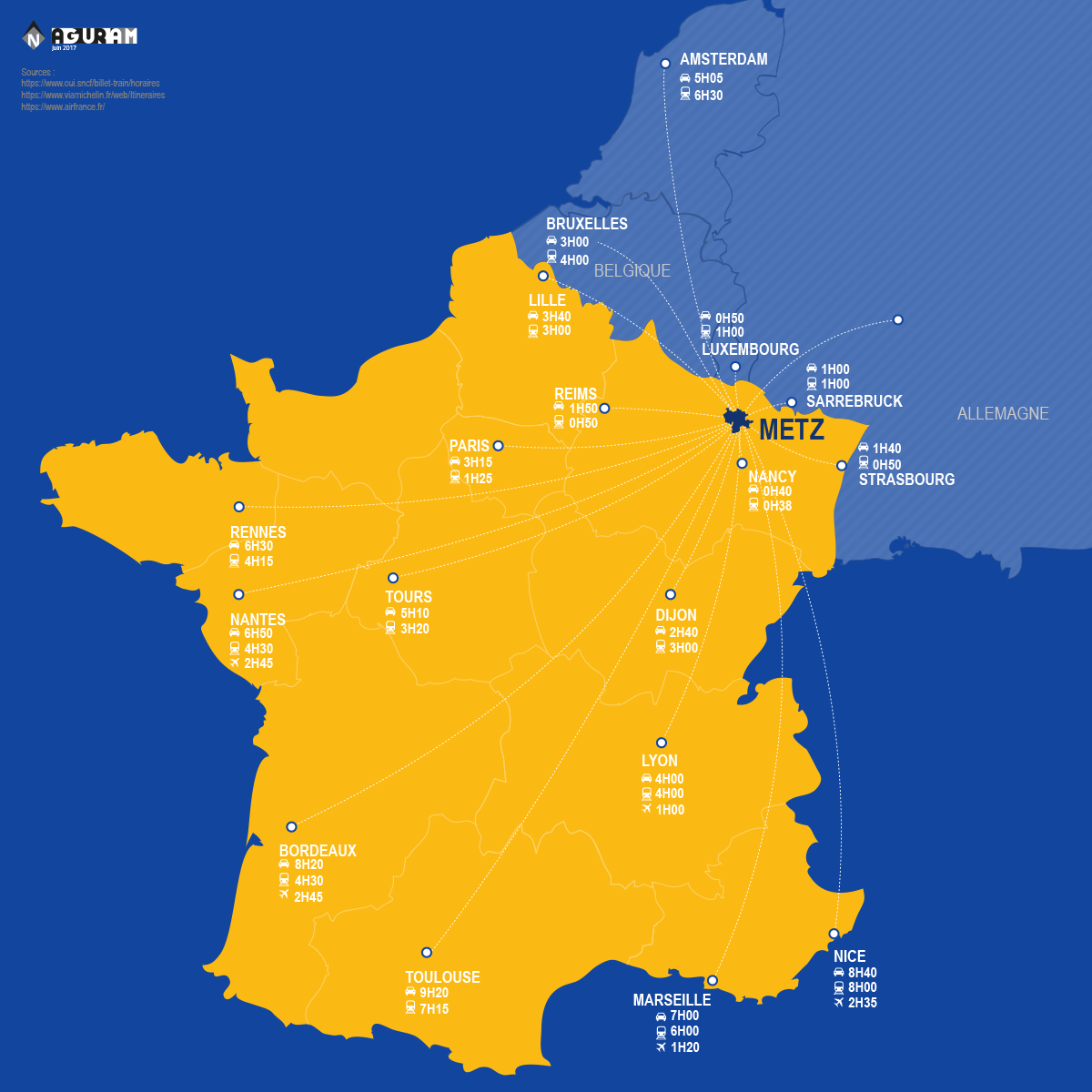Despite being destroyed several times, Amanvillers has always managed to rebuild itself.
In the Middle Ages, the city built its wealth on the exploitation of Jaumont stone, as demonstrated by Le Géant (The Giant) statue, and the majestic town entrance topped with two carriages. This stone was used for many buildings and monuments in Metz.
Discover our heritage
Public buildings
- Roman remains in Amanvillers forest
- 12thcentury Champenois farm remains on Route de Vernéville; chapel dedicated to the Order of Saint John of Jerusalem.
- Montigny-la-Grange castle remains (supporting wall). Pierre Renguillon was cited as the owner in 1403. The castle was rebuilt in 1597 by Jean Gauvain, then destroyed in 1944 during the Liberation battles.
- Le Géant statue was created by André Forfert, and can be found in front of the football stadium.
Religious buildings
- Saint-Clément Church in the neo-Gothic style. Built in 1895, it was demolished in 1944, and then rebuilt after 1950. It has stained glass windows created by Camille Hilaire.
- Champenois Chapel, dedicated to the Order of Saint John of Jerusalem (destroyed)
- Reformed Protestant church, built in 1906 (destroyed)
Walks and green spaces
- Metz-Métropole nature walk: “From battlefields to fields of flowers”
- Parc de la Pariotte and its pine forest
- Health circuit: close to Montvaux stream and the old railway line, on Route de Châtel-Saint-Germain.



